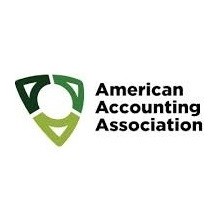
محیط کار مشتری و حسابرسی شرکت
چکیده
ما مجموعه داده های جدیدی را درباره رتبه بندی رضایت از محل کار ارائه شده توسط حدوداً 100،000 تن از کارمندان شاغل در شرکت های بزرگ عمومی ایالات متحده به دست آوردیم. ما نشان دادیم که رتبه بندی محل کار کمتر با حق الزحمه های حسابرسی بالاتر و تاخیرهای طولانی تر در ارائه گزارش حسابرسی ارتباط دارد. هم چنین رتبه بندی پایین تر محل کار منجر به افزایش احتمال دریافت اظهار نظر درباره تداوم فعالیت مشروط توسط شرکت نیز می گردد. مطالعه ما نشان داد که محیط کار سازمانی بر ارزیابی ریسک حسابرس و نتایج حسابرسی تاثیر گذاشته و نکاتی را به حسابرسان فعال و مدیران شرکت ها عرضه می دارد. مصاحبه ما با حسابرسان فعال در شرکت های بزرگ حسابداری آمریکا نکاتی را درباره نحوه تاثیرگذاری کیفیت محل کار بر حسابرسی شرکت ارائه می نماید.
I. مقدمه
برداشت کارمند بر سازمان تاثیر می گذارد. اگر کارمندان تلقی مثبتی از محیط کار خود داشته باشند، نسبت به شغل خود رضایتمندی بیشتری داشته، به آن متعهدتر بوده و سازنده تر هستند (هوسلید، 1995؛ هارتر، اشمیت، و هیز 2002). کارمندان ناراضی به احتمال زیاد مشتریان را گریزان نموده، مرتکب سوء رفتار شده، و به برند شرکت آسیب می زنند. حسابرسان خارجی می دانند جو مناسب برای حفظ مزایای رقابتی حیاتی است. به طور خاص، چهار شرکت بزرگ حسابرسی توجهی بسیاری را به درک بهره وری در محل کار نشان داده اند.
در سال 2012، KPMG بین المللی صدها نفر از مدیران سراسر جهان را به منظور مطالعه نحوه تبدیل شدن بخش منابع انسانی به یک شریک استراتژیک برای کسب و کار برگزید. در سال 2013، ارنست و یانگ بررسی نمودند که چگونه شرکت ها می توانند عملکرد خود را با مدیریت فعال تعامل بین نسل های مختلف در محل کار افزایش دهند. دو سال بعد، ارنست و یانگ مشکلات فزاینده ای را که کارگران شرکت در مدیریت توازن کار و زندگی و فرصت های پیشرفت با آن مواجهند نشان دادند. دلویت در 2014 دریافت که اطلاعات و ارتباطات بیش از حد کارمندان شرکت را آشفته ساخته، بهره وری آن ها را تضعیف نموده و منجر به کاهش تعهد آنان می گردد. از این رو دلویت حامی آن است که شرکت ها، محیط کار خود را ساده نموده و زمان بیشتری را برای تفکر و حل مسائل اختصاص دهند. در حالی که حسابرسان خارجی بر این باورند که جو محل کار مشتری، دارایی نامشهود مهمی محسوب می گردد، چند محقق حسابداری به بررسی نظام مند ارزیابی محیط کار مشتریان توسط حسابرسان پرداختند.
Abstract
We obtain a novel dataset of workplace satisfaction ratings submitted by about 100,000 employees working for large public U.S. companies. We document that lower workplace ratings are associated with higher audit fees and longer audit report lags. Lower workplace ratings also increase the likelihood of firms receiving modified going concern opinions. Our study shows that organizational workplace environments affect auditor risk assessments and auditing outcomes and provide insights for practicing auditors and corporate executives. Our interviews with practicing auditors at large U.S. accounting firms also provide insights as to how workplace quality affects the corporate audit.
I. INTRODUCTION
Employee perceptions affect organizations. If employees perceive their work environment as positive, they are more satisfied with their job, more engaged, and more productive (Huselid 1995; Harter, Schmidt, and Hayes 2002). Discontent employees are more likely to alienate customers, commit misconduct, and damage their company’s brand.1 External auditors understand that a good climate is crucial for sustaining competitive advantages. The Big Four auditing firms, in particular, have shown heightened interest in understanding workplace productivity.
In 2012, KPMG International canvased hundreds of executives from around the globe to study how human resource departments can become a strategic partner to the business.2 In 2013, Ernst and Young explored how companies can maximize performance by actively managing the interplay between generations in the workforce.3 Two years later, Ernst and Young documented the increasing difficulties corporate workers face in managing work-life balance and opportunities for advancement.4 Deloitte found in 2014 that information overload and hyperconnectedness overwhelm corporate employees, undermine their productivity and reduce their engagement. Deloitte has since advocated that corporations simplify their work environments and allocate more time for thinking and solving problems.5 While external auditors understand that a client’s workplace climate is an important intangible asset, few accounting researchers have systematically examined whether auditors assess their clients’ workplace environment.
چکیده
I. مقدمه
II. ادبیات مربوطه
III. طرح فرضیات
IV. داده ها و مشخصات
ساخت نمونه
مشخصات اقتصادسنجی
V. نتایج
نمونه همسان بر اساس نمره تمایل
حق الزحمه حسابرسی
تاخیر در ارائه گزارش حسابرسی
اظهار نظر درباره تداوم فعالیت
آزمون های استحکام
VI. نتیجه گیری
جدول 1. تعاریف متغیر: محیط کار
نتایج حسابرسی
خصوصیات شرکت
جدول 2. خلاصه آماره ها
جدول 3. همسان سازی نمره تمایل
جدول 4. اثر محیط کار بر حق الزحمه حسابرسی
جدول 5. اثر محیط کار بر تاخیر در ارائه گزارش حسابرسی
جدول 6. اثر محیط کار بر اظهار نظر درباره تداوم فعالیت
جدول 7. استحکام
Abstract
I. INTRODUCTION
II. RELATED LITERATURE
III. HYPOTHESES DEVELOPMENT
IV. DATA AND SPECIFICATIONS
Sample Construction
Summary Statistics
Econometric Specifications
V. RESULTS
Propensity Score Matched Sample
Audit Fees
Audit Report Lag
Going Concern Opinions
Robustness Tests
VI. CONCLUSION
APPENDIX
Table 1
Variable Definitions
Firm characteristics
Audit outcomes
Table 2 Summary Statistics
Table 3 Propensity Score Matching
Table 4 The Effect of Workplace Environment on Audit Fees
Table 5 The Effect of Workplace Environment on Audit Report Lag
Table 6 The Effect of Workplace Environment on Going Concern Opinions
Table 7 Robustness
- ترجمه فارسی مقاله با فرمت ورد (word) با قابلیت ویرایش، بدون آرم سایت ای ترجمه
- ترجمه فارسی مقاله با فرمت pdf، بدون آرم سایت ای ترجمه
